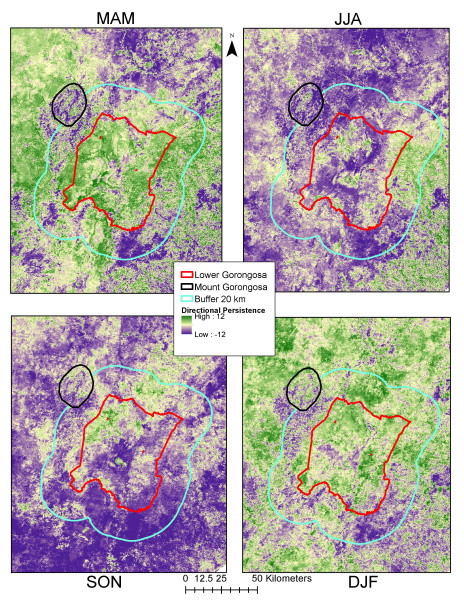
CHILD, HERRERO, KHATAMI, SOUTHWORTH, WAYLEN, YANG – A Healthy Park Needs Healthy Vegetation – The Story of Gorongosa National Park in the 21st Century
Hannah Herrero, Peter Waylen, Jane Southworth, Reza Khatami, Di Yang, Brian Child
Article first published online: 03 FEB 2020 Remote Sensing
DOI: 10.3390/rs12030476
ABSTRACT: Understanding trends or changes in biomass and biodiversity around conservation areas in Africa is important and has economic and societal impacts on the surrounding communities. Gorongosa National Park, Mozambique was established under unique conditions due to its complex history. In this study, we used a time-series of Normalized Difference Vegetation Index (NDVI) to explore seasonal trends in biomass between 2000 and 2016. In addition, vegetation directional persistence was created. This product is derived from the seasonal NDVI time series-based analysis and represents the accumulation of directional change in NDVI relative to a fixed benchmark (2000–2004). Trends in precipitation from Climate Hazards Group InfraRed Precipitation with Station data (CHIRPS) was explored from 2000–2016. Different vegetation covers are also considered across various landscapes, including a comparison between the Lower Gorongosa (savanna), Mount Gorongosa (rainforest), and surrounding buffer zones. Important findings include a decline in precipitation over the time of study, which most likely drives the observed decrease in NDVI. In terms of vegetation persistence, Lower Gorongosa had stronger positive trends than the buffer zone, and Mount Gorongosa had higher negative persistence overall. Directional persistence also varied by vegetation type. These are valuable findings for park managers and conservationists across the world.
Read the full publication at Remote Sensing